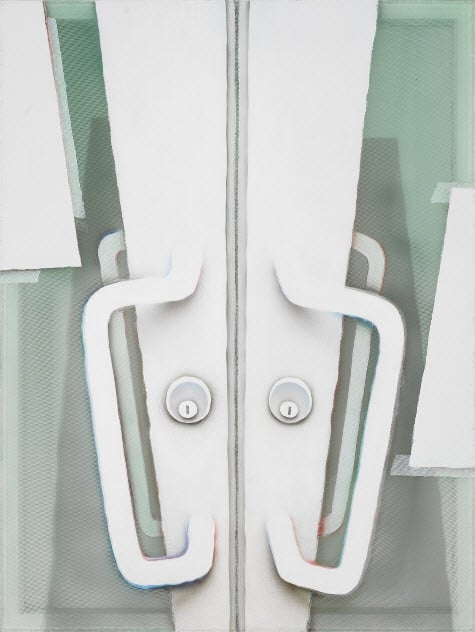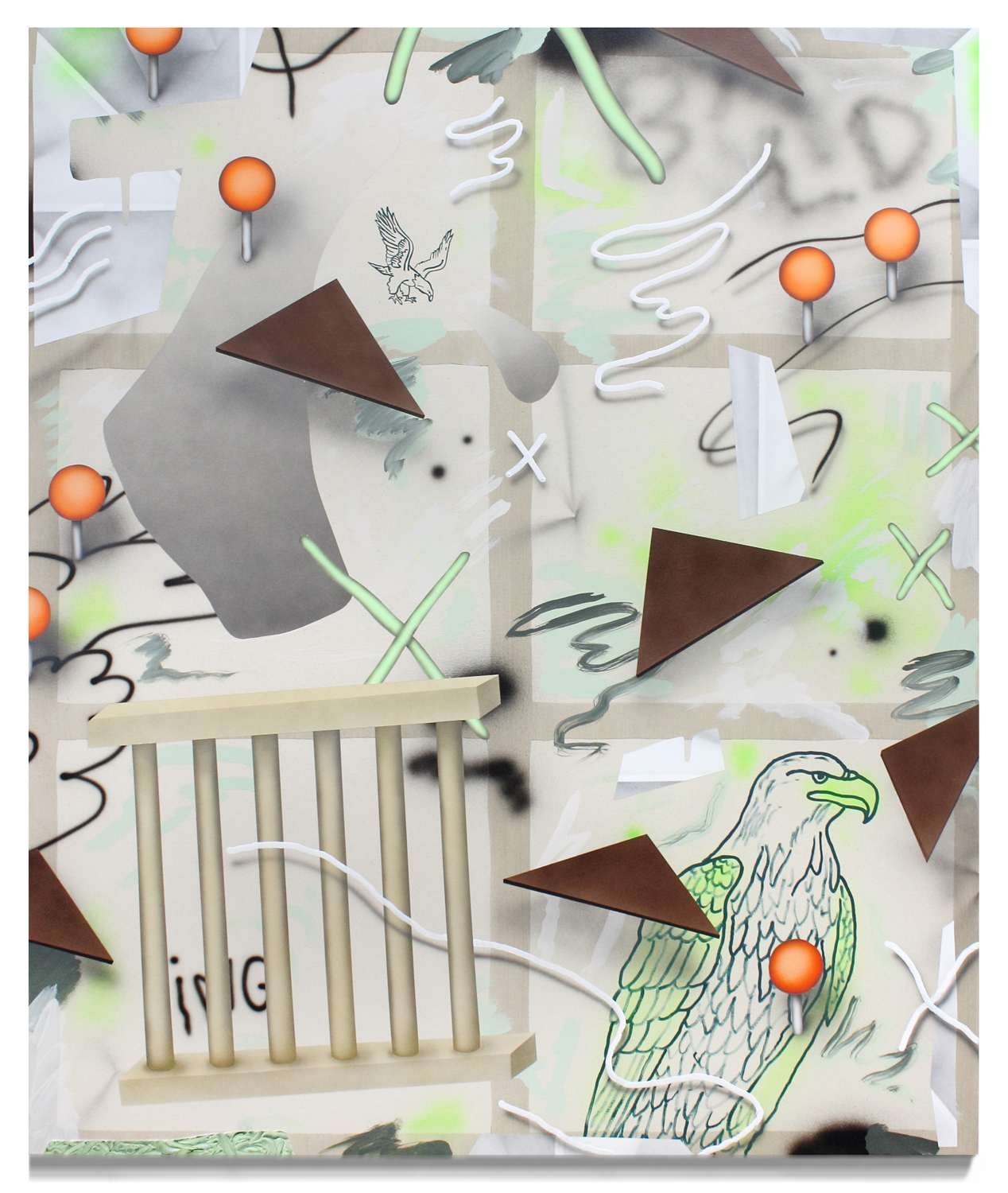Art & Exhibitions
artnet Asks: Luis De Jesus, On Dealing on the West Coast
Don't you feel like giving up New York sometimes, too?

Don't you feel like giving up New York sometimes, too?

Artnet News

After a successful 20 years living and working in New York, Luis De Jesus had enough of that particular lifestyle. Since his move to California, he has built up his eponymous gallery, Luis De Jesus Los Angeles, into a thriving business that focuses on emerging contemporary artists, exhibiting rising stars like Josh Reames and Kate Bonner alongside more established artists such as James Hyde. The current exhibition, “Surface,” features Alexi Worth’s pleasantly surreal paintings, and is on view through December 19.
Here, Luis discusses what’s next for his gallery, and wonders if the art world is heading towards an inevitable Bloomberg-QVC-TMZ-like future.
What made you decide to open the gallery in California?
I never planned to open a gallery in California. After living 20 years in New York City, I reached a point where I simply wanted to be in a more natural and healthier environment, and meet new people. I left New York in 2003 and headed west, spending a year in Tucson and then moving to San Diego in 2004, where I had family and friends. I spent a couple of years working as director of a local gallery, but became restless and determined that I had to either open my own gallery or return to New York. Six months later, in September of 2007, I opened Seminal Projects in the Little Italy district of San Diego. The economy had already started to slide and by the following fall it was in a complete nosedive. I’m rather proud that we managed to survive and prosper during such a difficult period, and relocating to LA in early 2010 provided the momentum to take the gallery to the next level.
Tell us about your first show. Was there a particular moment, good or bad, that was memorable for you?
I’ve had a number of first shows: my first solo show as an artist, my first curatorial endeavor, my first exhibition as a gallerist—did I mention my first off-Broadway show? (I’ll save that one for later!) One exhibition that I’m particularly fond of is “SPENT,” which I organized at the New Museum and was presented next door at Marine Midland Bank. It focused on ideas of money, power, exchange, and trust. It was my first museum curatorial project, and featured a big group of emerging artists—including Glenn Ligon, Moyra Davey, Gary Simmons, Donald Moffett, Paul Ramirez Jonas, Julia Scher, and Carrie Mae Weems, among others. For many of them it was also their first show in a museum context.
Across the street another bank, Citibank, used its own location to promote its new acquisitions, so the choice of that venue became an important part of my project, because it directly engaged the real working class audience whose lives it addressed. “SPENT” was subversive in a very subtle, tongue-in-cheek manner. This became clear to the management during the opening, and it could have easily become an issue were it not for Marcia Tucker defusing the situation with a huge smile and a big congratulatory “thank you!” It also didn’t hurt that she was bigger than all of them.

Alexi Worth,
Quadruple Handle (2015). Courtesy of Luis de Jesus Los Angeles.
What is the most challenging part of running a gallery?
This is such an all-consuming job that for me, at least, one of the biggest challenges is still carving out personal time to do my own thing—whether that means checking out exhibitions at other galleries and museums, or committing time for my daily yoga practice or going on hikes. As much as I enjoy the job it’s imperative to get a healthy distance from it and to refocus. This past summer, we actually took a vacation (my first in a long time) and it more or less segued into our August summer break, so it felt incredibly luxurious.
Who are some of your break-out artists?
Josh Reames, Zackary Drucker, and Federico Solmi—and Kate Bonner, Chris Engman, and Hugo Crosthwaite are not far behind.

Josh Reames, Jail Bird (2015). Courtesy of Luis de Jesus Los Angeles.
What has been your proudest moment?
Attending the opening of the 2014 Whitney Biennial with Zackary Drucker and Rhys Ernst and their parents was an especially proud moment for us. Their Relationship series turned out to be one of the most beautiful, powerful, and timely presentations in the whole exhibition. Since then, it has been shown at the Art Gallery of Ontario, the Bonnefanten Museum, the Irish Museum of Modern Art, Foto Fest International, and the Flaten Art Museum. The monograph is going to be released next fall.
What is your next important show? Tell us why we should come.
Our next big show is going to be a collaborative installation between Josh Reames and Jose Lerma, taking place in January 2016. Josh and Jose are close friends from Chicago and have been kicking the idea around for some time. They’re going to take over the gallery for the entire month and basically create all the work on-site. I’m sure it’s going to be totally insane and brilliant. We’ll be down for more than six weeks—closing just before the holidays and reopening the last weekend in January. We’ve never done anything like it before, and I’m really excited!
Since you started, what have been the biggest changes in the gallery market?
Without a doubt, it’s the impact of the online platforms (artnet, Artsy, Artspace, Paddle8, Instagram, etc.), and the rise and proliferation of the art fairs and biennials. It’s only been 15 years since Art Basel dug its heels into the sand in Miami, and even less time for the online sites, but the effects have been nothing short of revolutionary. I don’t think anyone could have ever imagined the impact of the internet. I recall taking part in a heated discussion with Jacqueline Humphries during an art theory class that we attended together while at Parsons, in which I pointed out art’s increasing entanglement with entertainment. She snapped at me and said something to the effect that art isn’t some variety show or football game that you’re going to sit around watching all day on TV.
In one sense, she’s right—all this art “business” has nothing to do with art—but, that’s sort of what’s happened, right? I mean, that’s what we do—sit in front of our computer screens all day, and shop the art market. I call it the drive-by mentality. With a click of the mouse or tap of the phone, we can see all the exhibitions and get all the news (and gossip) we want without ever leaving our home, car, or office. I’m actually surprised that no one’s tried to launch an art channel that mixes Bloomberg with QVC and TMZ! Ugh.
What advice can you give to a first-time collector?
Buy what you like and what holds your attention, what stops you and makes you ask questions—even if you don’t exactly know what it is. If you walk away and have forgotten about it a minute later, then it’s probably not meant to be. There are many lessons to becoming a collector, and trusting your instinct is paramount—especially for the novice.
Also, don’t worry if it’s your first time. People often hold on to their first purchase out of sentimental reasons, regardless how good or bad it is.